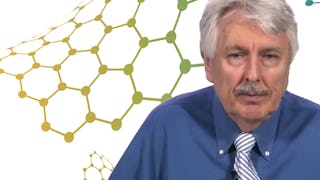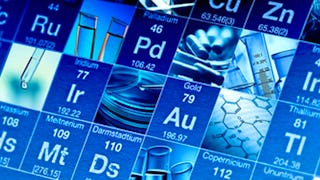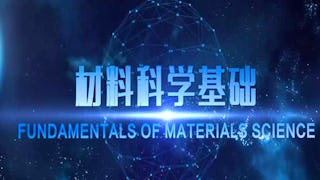Have you ever wondered why ceramics are hard and brittle while metals tend to be ductile? Why some materials conduct heat or electricity while others are insulators? Why adding just a small amount of carbon to iron results in an alloy that is so much stronger than the base metal? In this course, you will learn how a material’s properties are determined by the microstructure of the material, which is in turn determined by composition and the processing that the material has undergone.



(1,061 reviews)
Details to know

Add to your LinkedIn profile
7 assignments
See how employees at top companies are mastering in-demand skills


Earn a career certificate
Add this credential to your LinkedIn profile, resume, or CV
Share it on social media and in your performance review

There are 2 modules in this course
This course picks up with an overview of basic thermodynamics and kinetics as they pertain to the processing of crystalline materials. The first module deals with phase diagrams - charts that tell us how a material will behave given a certain set of variables such as temperature, pressure, and composition. You will learn how to interpret common and complex phase diagrams and how to extract useful information from them.
What's included
25 videos5 readings4 assignments
If thermodynamics, which we covered in the previous module, tells us how a material wants to change, then kinetics tells us how and how quickly that transformation occurs. This module starts by explaining the driving force for phase transformations. We will cover the nucleation and growth of precipitates, solidification, and sintering. Finally, there are a number of lessons which apply all that has been covered in the course to understanding carbon steels.
What's included
33 videos3 readings3 assignments
Instructor

Offered by
Explore more from Mechanical Engineering


Georgia Institute of Technology


Arizona State University


Shanghai Jiao Tong University


Arizona State University
Why people choose Coursera for their career




Learner reviews
1,061 reviews
- 5 stars
79.75%
- 4 stars
17.13%
- 3 stars
2.16%
- 2 stars
0.65%
- 1 star
0.28%
Showing 3 of 1061
Reviewed on Apr 11, 2020
I Great thank to Professor Thomas H. Sanders, Jr. for providing valuable information . I joyed a lot on Material Processing course and i learnt new information.
Reviewed on Dec 1, 2020
You are awesome about the material process and metallurgy. I am expecting from you to develop lots of material issues. Thanks for evertything.
Reviewed on May 28, 2020
the course is well organised and very descriptive. prof. Sanders has explained the concepts very clearly with the help of graphs and theoretical calculations.

Open new doors with Coursera Plus
Unlimited access to 10,000+ world-class courses, hands-on projects, and job-ready certificate programs - all included in your subscription
Advance your career with an online degree
Earn a degree from world-class universities - 100% online
Join over 3,400 global companies that choose Coursera for Business
Upskill your employees to excel in the digital economy
Frequently asked questions
Access to lectures and assignments depends on your type of enrollment. If you take a course in audit mode, you will be able to see most course materials for free. To access graded assignments and to earn a Certificate, you will need to purchase the Certificate experience, during or after your audit. If you don't see the audit option:
The course may not offer an audit option. You can try a Free Trial instead, or apply for Financial Aid.
The course may offer 'Full Course, No Certificate' instead. This option lets you see all course materials, submit required assessments, and get a final grade. This also means that you will not be able to purchase a Certificate experience.
When you purchase a Certificate you get access to all course materials, including graded assignments. Upon completing the course, your electronic Certificate will be added to your Accomplishments page - from there, you can print your Certificate or add it to your LinkedIn profile. If you only want to read and view the course content, you can audit the course for free.
You will be eligible for a full refund until two weeks after your payment date, or (for courses that have just launched) until two weeks after the first session of the course begins, whichever is later. You cannot receive a refund once you’ve earned a Course Certificate, even if you complete the course within the two-week refund period. See our full refund policy.
More questions
Financial aid available,

